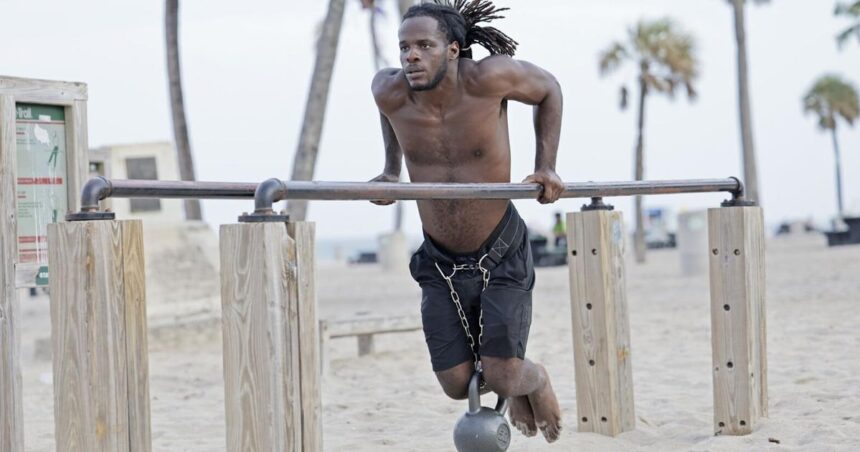Coming off a record-breaking heat wave with the hottest part of the summer still ahead, learning what to do — and what not to do — as the heat index climbs could have big health consequences.
As temperatures soar, the risk increases for heat stroke, heat exhaustion, or dangerous sunburn.
What might start with a headache or leg cramps can quickly turn serious when the body temperature rises in the scorching heat. Seniors and babies are most vulnerable, but doctors say anyone who spends time outdoors can be affected by the high temperatures and brutal humidity.
Why does the heat make us feel exhausted?
People are also reading…
It takes massive amounts of energy to maintain a normal, consistent body temperature. On a sweltering hot day, the body is working hard to keep cool, and this extra labor makes you feel tired and sluggish.
Also, most people spend their lives slightly dehydrated. Being hot and sweaty only worsens dehydration, and a symptom of dehydration is fatigue.
How do I know my heat tolerance?
Some people are more susceptible to heat than others. Older adults, for example, are more at risk for heat stroke because their bodies don’t adjust as well to sudden temperature changes.
In addition, seniors are more likely to be on salt-reduced diets or have conditions for which they take medications that affect their responses to hot temperatures.
Physicians advise seniors to hydrate more often during the summer months and stay indoors as much as possible.
Also, if you’ve spent a lot of time in a cold weather climate and travel to a hotter one, you may find the transition to the area’s heat and humidity more challenging. Experts say the body takes about a week to adapt and find ways to cool itself.
What’s the best way to cool down?
Some cooling-off methods work better than others, so it’s good to know which works best for you.
Cold and ice drinks do cool you down, but only momentarily.
You can spritz yourself with cool water and then fan yourself with a piece of paper or by standing in front of a fan. Or, you could soak your hands and feet since extremities are radiators of heat.
Ice packs also work if you wrap them in a shirt or towel and place them on your cheeks, hands, feet, or the back of your neck.
How do I know if I’m about to get heatstroke?
Humidity creates the ideal environment for heat stroke, experts say.
With heat stroke, the body’s core temperatures rise above 104 degrees in adults and 105 degrees in children. Heat stroke happens when the body gets severely dehydrated or is unable to cool itself off in extreme temperatures. It tends to result from spending long periods or doing strenuous activity in hot weather.
Josue Jean-Charles does dips in the evening heat May 15 at Fort Lauderdale beach. Jean-Charles said he usually works out at the beach early in the morning to avoid excessive-heat injuries with temperatures on the rise.
Sweating is good, right?
Outdoor activities in high temperatures that cause big-time sweating can become a problem. Sweating releases minerals and salts in the body that help with electrolyte balance. Heavy sweating can lead to dehydration. The more you sweat, the more you need to stay hydrated.
Beverages to avoid if you’re spending long durations in the sun:
- Alcohol
- Coffee
- Caffeinated soft drinks
They are diuretics that rid your body of salt (sodium) and water. Before you have that cocktail in the pool, you might want to think about following up with water. The best way to fight dehydration is with water and a salty snack, such as pretzels or baked potato chips. And a word of warning: Don’t take a hot shower after coming in sweaty from outside. Between the steam and loss of sodium, the combination is likely to make you pass out.
What are the signs of heat illnesses?
Heat illnesses tend to present themselves as a spectrum of symptoms. A mild sign could be a rash, which could progress into muscle cramps from a lack of hydration.
Signs of heat exhaustion, the precursor to heat stroke, are: Heavy sweating, clammy skin, a rapid pulse, dizziness, and headache.
If any of these occur, stop what you’re doing, get into a cooler place, and hydrate.
The most severe heat-related illness is heat stroke, and without emergency treatment, it can lead to death or organ damage. It only takes 10 to 20 minutes to develop heat stroke if body temperature rises fast. Signs include nausea and vomiting, flushed skin, rapid breathing, racing heart rate, and possibly loss of consciousness.

Take breaks and don’t wait to be thirsty to drink water, particularly during long bouts in the hot sun. Medical professionals urge seniors to hydrate throughout the day.
If someone is showing signs of heat-related illness, cool them down with a wet cloth or ice bath to lower their body temperature as soon as possible. Cold water or ice should be applied to armpits or the groin area, where big arteries are nearest to the skin. Also encourage them to take tiny sips of sports drinks with electrolytes.
Hot cars can cause health problems, too. It takes only four minutes to faint in a hot car. Make sure to let out some of the steam before sitting in the enclosed sauna-like vehicle.





